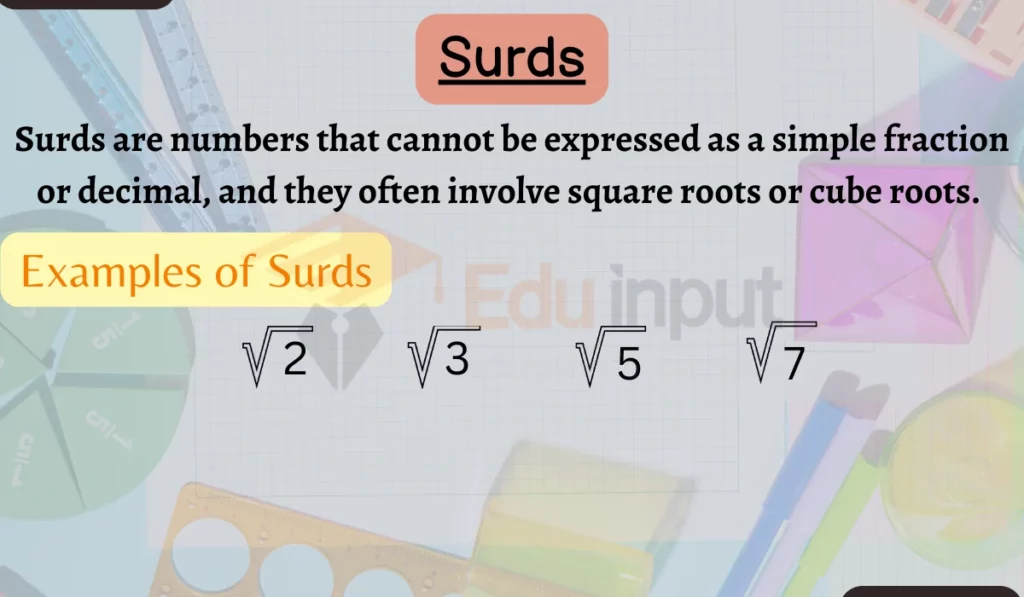10 Examples of Surds in Mathematics
Surds, also known as irrational numbers, are a essential component of mathematics. These numbers cannot be expressed as a simple fraction or decimal, and they often involve square roots or cube roots.
In this article, we will discuss ten examples of surds in mathematics.

Examples of Surds
These are 10 examples of surds.
1: Square Roots
Most common surd is the square root of a non-perfect square.
For example, √2, √3, and √5 are all surds since they cannot be expressed as simple fractions.
2: Cubic Roots
Cubic roots, such as ∛7 and ∛11, are also surds. These are numbers that cannot be exactly expressed as a fraction or decimal.
3: Addition of Surds
When you add or subtract surds with different values under the root, they remain surds.
For example, √2 + √3 is a surd, as it cannot be simplified further.
4: Multiplication of Surds
When you multiply surds with different values under the root, the result is also a surd.
For instance, √2 × √3 is a surd.
5: Division of Surds
Division of surds, like √6 ÷ √2, also results in a surd.
6: Rationalizing Denominators
Rationalizing the denominator of a fraction with surds, as in 1/√2, is a common mathematical technique.
7: Pythagorean Theorem
In geometry, the Pythagorean theorem often involves surds.
For example, in a right triangle, the length of the hypotenuse is given by √(a^2 + b^2), where ‘a’ and ‘b’ are the lengths of the two legs.
8: Trigonometric Ratios
Trigonometric functions like sine, cosine, and tangent often result in surd values.
For example, sin(45°) = √2/2, which is a surd.
9: Geometry and Area
In geometric calculations, surds are prevalent when determining the area of complex shapes, especially when non-perfect squares are involved.
10: Engineering and Design
In engineering and design, surds are used to calculate precise measurements and dimensions when working with non-standard shapes and angles.






Leave a Reply